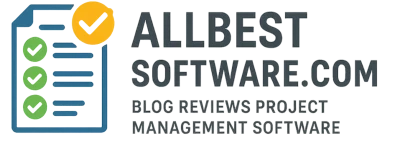Wrike Software
Overview
Wrike brings projects, people, and priorities into one place. Teams can visualize work as Gantt charts, Kanban boards, calendars, or data tables; automate recurring steps; manage intake with request forms; and track capacity with workload and resource tools. With strong permissions and governance, Wrike scales from small teams to complex enterprise environments.
What Is Wrike?
Wrike is a collaborative work management (CWM) tool that helps teams coordinate tasks, projects, and portfolios. It combines multi-view planning, real-time collaboration, automation rules, approvals, time tracking, dashboards, and analytics within a secure, admin-friendly workspace.
Key Features of Wrike
- Multiple Views: Gantt, Board, Table, Calendar, Dashboard, and custom views for different work styles.
- Automation & Rules: Trigger actions, move tasks, set assignees, update fields, and send notifications automatically.
- Request Forms & Blueprints: Standardize intake, reduce chaos, and spin up repeatable project structures in seconds.
- Resource & Capacity Planning: Balance workloads, forecast availability, and track time to improve utilization.
- Dashboards & Analytics: Monitor progress, spot bottlenecks, and share executive-ready reports.
- Proofing & Approvals: Review assets, annotate, version, and capture approvals with a clear audit trail.
- Security & Governance: Robust permissions, user groups, SSO, audit logs, and admin controls.
- Integrations & API: Connect with your everyday tools to keep work flowing smoothly.
Who Should Use Wrike?
- Marketing, Ops, PMO, IT teams that need structured workflows and visibility.
- Growing companies that outgrew lightweight task tools and now need resource planning and reporting.
- Enterprises that require governance, security, and cross-department portfolio coordination.
- Agencies & services teams managing requests, approvals, and repeatable client projects.
Pricing Overview
Use the interactive pricing below to explore costs by billing cadence and team size. (Values are set to commonly listed public price points; always verify before publishing.)
Wrike Pricing — Work Management
Free
Best for individuals- Basic tasks & projects
- Board & table views
- Limited automations
- Mobile & desktop apps
Team
Small teams- Unlimited projects & tasks
- Dashboards & shared spaces
- Automation rules (plan limits)
- File sharing & approvals
Business
Most Popular- Blueprints & request forms
- Advanced workflows & approvals
- Resource & capacity planning
- Analytics & custom fields
Enterprise
Custom- SSO, permissions & governance
- Security, compliance & audit logs
- Org-wide controls & automations
Pinnacle
Advanced- Advanced analytics & reporting
- Expanded security & governance
- Enterprise add-ons & support
* Pricing is per user. Team & Business totals update by billing cadence and team size. * Yearly billing often saves vs monthly. Totals shown in USD; regional pricing/taxes may differ.
Pros and Cons
Final Verdict
Wrike is a best-in-class choice for teams that need structure, visibility, and scale. If your work requires cross-team coordination, resource planning, and reliable reporting, Wrike delivers the flexibility and control you need.
Start with Wrike Free — Forever
Get essential task & project management. No credit card required.
- ✅ Intelligent task & project tools
- ✅ Board, table & calendar views
- ✅ Web, desktop & mobile apps
FAQs About Wrike
- What views are available?
Gantt, Kanban board, Table, Calendar, Dashboards, and more. - Is Wrike good for large organizations?
Yes. Higher tiers add advanced security, governance, and administration for scale. - Does Wrike support approvals and proofing?
Yes. You can annotate assets, manage versions, and capture approvals. - Are there mobile and desktop apps?
Yes. Wrike is available on web, desktop, and mobile with real-time sync. - Can I standardize project intake?
Yes. Use request forms and blueprints to create consistent, repeatable workflows. - Does Wrike integrate with other tools?
Yes. It connects to popular apps and also provides an API for custom integrations.


